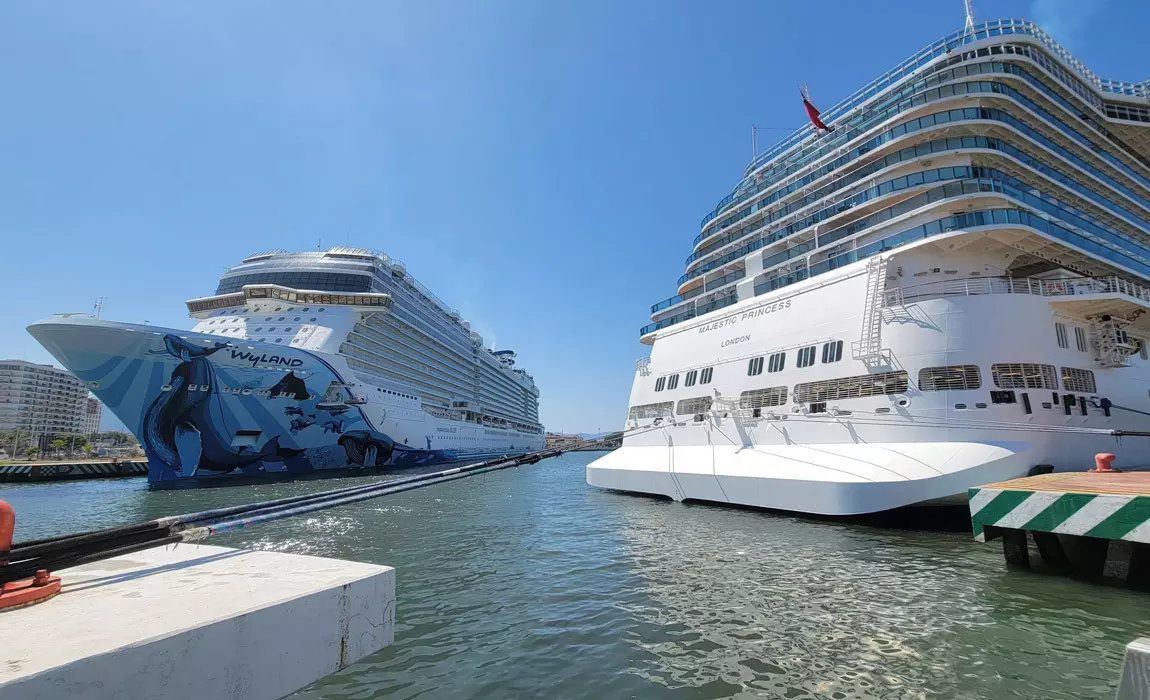Any time that a cruise ship has it's engines on the vessel is emitting enormous amounts of waste into the air. When in motion the emissions are far greater, but even idling for long periods of time generates waste. This is similar to how the engine on your car works, except that cruise ship engines are far far bigger and most cruise ships use a fuel that is far worse for the environment than what you put into your car. Luckily, there's a solution that is becoming more popular among both cruise terminals like San Diego and Seattle as well as destinations like Juneau. Shore power acts like a giant plug that connects to the ship and allows the captain to turn the ship's engines off while in port.
How Does Shore Power Work?
Shore power or "cold ironing" is a very basic process that simply allows the cruise ship (also used with other marine vessels such as cargo ships) to plug into the local power grid and turn their engines off. Cruise ships often have two different engines - a main engine that is used for propulsion and an auxilary engine use to power the "hotel" and provide electricity for all of the onboard functions other than the engines. When docked the captain is able to turn off the main engine but for obvious reasons they must keep the power going to the ship so lights, freezers, elevators etc. are able to remain functional.
By plugging the ship into shoreside power, the captain can turn the auxilary engines off as well. The results in air pollution reductions from the ship upward of 95%.
The process of connecting the ship to shorepower can take anywhere from 30-45 minutes and you may see large cables connected to the side of your ship next time you take a cruise.
At ports in California, it is required that ships "at berth" reduce their emissions by connecting to the electrica grid through shore power / cold-ironing / AMP, or an alternative emissions control device installed on the ship. This applies to cruise ships but also container ships and tankers too, making California one of the most progressive in the United States in seeking to reduce air pollution caused by ships.
Is Shoreside Power Really Green?
One of the biggest arguments against the major investments that have been made to implement shoreside power is that it merely shifts emissions from the ship to the powerplant. This is somewhat true in places around the world where power is being generated by non-renewable resources such as coal, diesel, or even natural gas. However, even modern coal power plants are far more efficient and burn their fuel more cleanly than marine bunker fuel. While cruise ships have made major improvement recently, they are still fairly bad in terms of efficiency because they use low-grade fuel.
In some placs though such as Alaska and British Columbia though, since shore power is generated using hydro-electric power, it can be considered much more green. Similarly, as more municipalities move towards solar and wind, shore power can absolutely be considered a green alternative.
How Much Do Cruise Ships Pollute The Air?
The amount of particulate emitted by cruise ships is absolutely stunning. For instance, a mid-sized crusie ship can consume as much as 150 tons of fuel each day while in motion and emit an equivalent to 1 MILLION cars.
There are several reasons for this shocking figure:
1) Cruise ships operate their engines all day long.
2) Cruise ships use low-grade fuel that is less refined than what you use in your car or truck
3) Even when not in motion, cruise ship engines generate electricity used by the entire vessel. They are in fact a power plant for a small city that may include 5,000-10,000 people!
Even while docked and the engines are idle, cruise ship engines are still consuming fuel and emitting nitrous oxide and hazardous particulate into the air. The amount varies from ship to ship and the exact fuel used, but the amount emitted is comparible to the diesel exhaust of 34,400 idling tarctor trailers.
What Ships Support Shore Power?
Among vessels visiting the North American and European cruise markets, most vessels now support shore power connections. This includes vessels from Holland America Line, Princess, Carnival, Norwegian Cruise Line, Disney, Royal Caribbean, and Celebrity Cruises. Additionally, many passenger ferries also use shore power, including Viking XPRS sailing out of the Port of Tallinn where they installed shore power systems on five of their piers.
What Cruise Terminals Support Shore Power?
All of the West Coast cruise terminals, including: San Diego, Long Beach, San Pedro - Los Angeles, San Francisco, Seattle, and Vancouver now offer shore power support for one or multiple vessels at a time. Destinations like Juneau also offer support for shore power connections but are limited by the available power in their grid.
Seattle:
During the 2021 cruise season, the Port of Seattle had more than 80 cruise ship calls and 54% of those were equipped to use shore power. By the 2023 cruise season, Port of Seattle expects to have 2/3rds of the cruise berths offer shore power, including Pier 66. Currently 60% of all calls at the Smith Cove Cruise Terminal at Pier 91 are equipped and expected to connect during visits to the city. Future projects in Seattle include full shorepower connections at all of the cities cruise piers.
San Diego:
The Port of San Diego has enabled shore power support since 2010, making them one of the first in California to do so. Shore power is being expanded with the project expected to be completed by the fall cruise season in 2022 where they will be able to offer shore power support to two vessels at a time. Additionally, the port is installing EV charging stations and other electrification projects to further reduce emisions. They estimate that with two shore power outlets at the cruise terminals, it will result in at least a 90% overall reduction in harmful pollutants such as NOx and Diesel Particulate Matter as well as CO2 and SO2.
Long Beach - Carnival Cruise Terminal
Carnival expanded their shore power facilities at the Long Beach cruise port during their 2017 update where they transformed the entire dome into their new port facility.
World Cruise Center - San Pedro, Port of Los Angeles
The World Cruise Center has had AMP support for shore power since 2011.
Thanks for reading. We hope this was helpful!
Why stop now?
Participate In Our Polls | Ask or Answer A Cruise Question | Contact Heather to Book Your Next Cruise!

